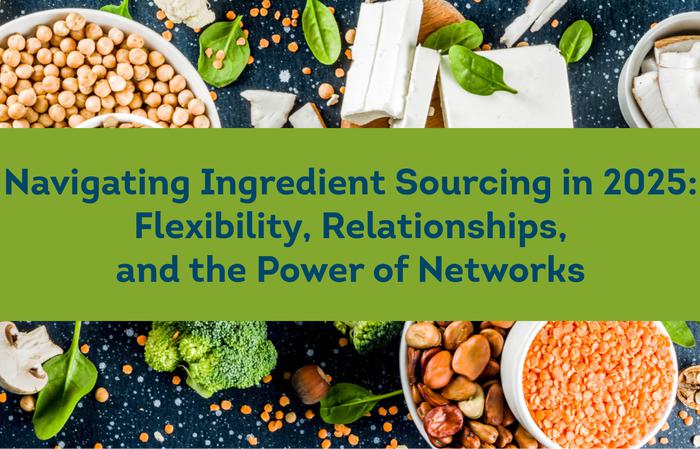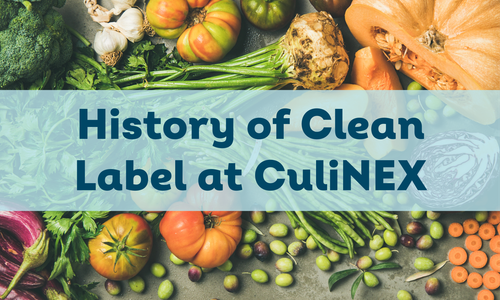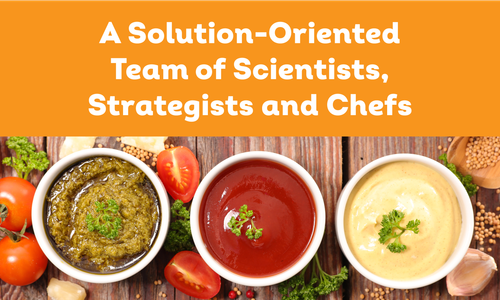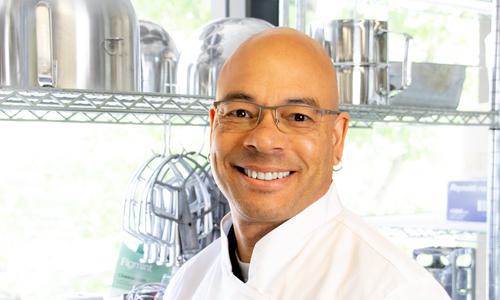
Navigating Ingredient Sourcing in 2025: Flexibility, Relationships, and the Power of Networks
Today’s complex supply chain environment is not the smooth, reliable system it once was. Consumer package goods (CPG) companies need a range of skills and deep relationships to secure the right ingredients on time and within budget. We recently sat down with Anne Haas, a procurement expert with CuliNEX partner JPG Resources. Haas has spent over a decade managing ingredient procurement and she’s an expert resource available to CuliNEX clients. Below, Haas offers insights into current trends, real-world challenges, and advice for brands navigating the uncertainty of 2025.
From Ideation to Implementation: The Role of a Sourcing Expert
Sourcing isn’t just about procurement—it's about building products from the ground up. From the moment a brand or developer ideates a new product, sourcing professionals are already hard at work, matching ingredient requests with the right suppliers based on specifications like certifications, functional benefits, country of origin, and volume needs.
“It’s about more than just finding an ingredient,” explained Anne Haas. “It’s building relationships with suppliers who are nimble and willing to work with different-sized businesses. That flexibility is critical, especially in today’s market.”
What’s Trending in 2025? Flexibility—But Not Where You Think
One major shift in 2025 has been the growing demand for buyer-side flexibility. While supplier flexibility is ideal, the current market—riddled with price volatility, shipping delays, and customs challenges—has forced brands to adapt.
“Prices can change daily, and overseas shipping is inconsistent. Brands need to be flexible on pricing, lead times, and even country of origin," said Haas. “The days of expecting a fixed quote and consistent ETA are gone.”
Real-World Challenge: The Case of Collagen
One striking example of this shift involved collagen sourcing. Haas and her team were working on a project using U.S.-sourced bovine collagen, which had strong supporting studies and met all our client’s standards. Then demand spiked. Suddenly, collagen became difficult to source in the U.S.
The team had to act fast, switching to other suppliers and countries of origin. This pivot brought new hurdles: tariffs, customs delays, and even client resistance to certain origins like China.
“Functional ingredients are particularly tricky,” said Haas. “You can’t just swap one for another—they have to perform the same way, and you need studies to back them up. That takes time.”
Building Strong Foundations with New Clients
So how can Haas help CuliNEX clients navigate this terrain? “I start by asking for their ingredient list, sourcing details, volume expectations, lead times, and certifications,” said Haas. This foundational work is often overlooked by brands, but a sourcing expert like Haas can provide the right context to determine these key pillars to success.
With that baseline, Haas identifies high-risk ingredients and works closely with developers to either locate alternatives or negotiate with existing suppliers. “Sometimes it’s about finding something new. Sometimes it’s about begging and pleading with a supplier to help out a small brand in the short term.”
“An ingredient expert like Anne is invaluable to the development team” said Mark Crowell, Founder of CuliNEX. “She is on the phone every day talking to vendors and building relationships. Our developers rely on Anne to help define the options and manage the details so they can focus on what they do best—develop products.”
Success Story: From Ideation to National Retail
Haas described one recent win that involved a frozen fruit-based product, now on shelves nationwide.
“We supported them from flavor ideation through to launch,” said Haas. Her expertise guided the client’s new procurement hire to source hard-to-find fruit, get new contracts in place, create purchase orders, and manage logistics.
After just a few production runs, the brand emerged as self-sufficient. Haas added with a laugh, “That’s the goal: to get them to the point where they don’t need me anymore.”
3 Must-Know Sourcing Tips for Brands in 2025
With uncertainty in the supply chain, Haas offered three key pieces of advice for brands developing new products:
- Know Your Certification Requirements Up Front
Whether it's organic, non-GMO, kosher, or vegan, clarity from the beginning helps avoid costly reformulations down the road.
- Be Transparent About Your Timelines
Even if things shift (and they will), being upfront with estimated launch dates allows suppliers to plan better and build inventory accordingly.
- Be Flexible But Know Your Core Values
Define what’s non-negotiable and what’s adjustable. “Maybe U.S.-sourced is ideal, but if it’s not available short-term, you might need to consider other origins.”
Helping Brands Define What Really Matters
While Haas doesn’t directly help clients define their brand values, she’s part of the larger team that does. One common issue she works to overcome is the tendency for clients to include every possible feature in their products. In reality, many CPG companies find success more easily when they focus on their unique, core priorities.
“We work with a lot of brands that want to check every box—non-GMO, gluten free, Vegan, organic—and still deliver best in market flavor” said Haas, “That’s where our developers guide them through strategic refinement and trade-offs to help prioritize what matters most to the brand and bring their vision to life.”
By showing clients the taste and performance impact of ingredient decisions, clients often gain clarity on what’s core to their identity—and what’s negotiable. Marketplace success comes from knowing what’s important and emphasizing their key differentiators in their sourcing, production, and marketing.
Looking Ahead: What’s Next for 2025?
Is your CPG company forecasting the rest of 2025? When asked about the future, Haas replied, “I wish I had a crystal ball.” Even without magic, Haas can tell that many suppliers are in wait-and-see mode. “We're already seeing pressure on high-demand ingredients like collagen and chocolate,” she said. “This is driven by both climate and global demand.”
Given today’s volatile environment, CuliNex can help clients plan for longer lead times and higher prices. Our team can help you develop a ready roster of backup suppliers. And we can tap into our deep networks to solve problems fast. Contact us now and see how we can help you navigate the tricky waters of ingredient sourcing.
Final Thoughts: Why Relationships Matter
When you work with CuliNEX, you’re not just hiring one person—you’re getting access to an entire ecosystem of relationships: suppliers, distributors, marketers, retailers. Our ecosystem is what turns sourcing from a transaction into a competitive advantage. In a world of uncertainty, relationships are everything.
Interested in learning more about how our sourcing and supply chain teams can support your next product launch? Reach out to us at CuliNEX—we’ve got the team to help you navigate the ever-changing landscape of ingredients and innovation.








